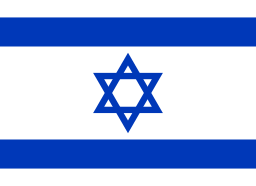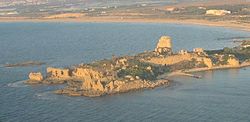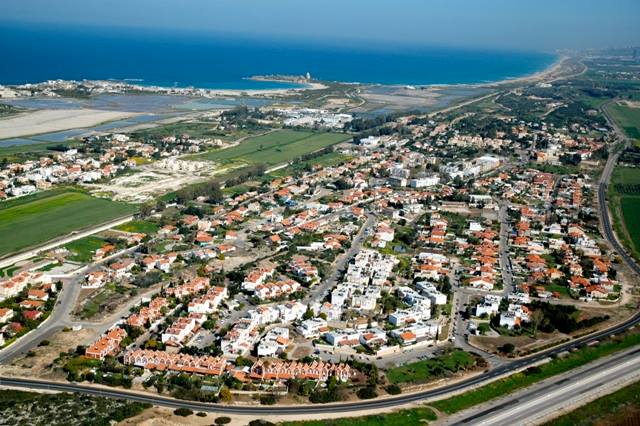
עתלית ישׂראל Coordinates: 32° 41' 14" N 34° 56' 18" E 
|
||

עתלית ישׂראל Coordinates: 32° 41' 14" N 34° 56' 18" E 
|
||
| Home | Maps | Community | The Fallen | People & Families | Links | Census |

Atlit is a coastal town located south of Haifa, Israel. Originally an outpost of the Crusaders, who built Château des Pélerin on the site. The château was one of the largest citadels in the Holy Land.
Château des Pélerin was one of the last Crusader outposts to withstand the assaults of Baibars1. Château des Pélerin fell in 1291. Five years later, in 1296, during Mamluk rule, Atlit and its surrounding area was settled by members of the Tatar Uwayrat tribe.

In 1596, while under Ottoman rule, Atlit, as a farm, was recorded paying taxes to the Ottoman Government.
During the rule of Acre Governor Sulayman Pasha al-Adil2, Atlit was the headquarters of local strongman Mas'ud al-Madi, who was appointed the mutasallim (tax collector and enforcer) of the Atlit coast; the latter consisted of the territory stretching from Umm Khalid to Haifa.
According to English Consul Rogers, in 1859 Atlit's population was recorded to be "180 souls"; their tillage was thirteen feddans3 By 1881, the Survey of Western Palestine noted the existence of a small Arab village. The Jewish village of Atlit was founded in 1903 under the auspices of Baron Edmond de Rothchild; most of the land was bought from Arab fishermen.

Aaron Aaronsohn (1876 – 1919)4 established an agricultural station at Atlit in 1911. During World War I, the village was used as a base by the Nili5 Spy Ring.6
In the 1922 Census, recorded during the British Mandate of Palestine, Atlit had a population of eighty-one people, all of whom were Muslim. The nearby Atlit Colony had a population of seventy-eight Jews and three Muslims. The Atlit Salt Works consisted of one-hundred-ninety-eight Jews, one Muslim, and one Christian. By 1931, that year's census recorded 413 Muslims, 496 Jews, and thirty-nine Christians, living in one-hundred-ninety-three houses. Seven years later, in 1938, the number of Arabs and Jews living in the Atlit region were 508 and 224 people, respectively. During the 1940's, land sales led to a sharp decline in the Arab population; by 1944/1945, there were only one-hundred-fifty Arabs (90 Muslims and 60 Christian) still living in the area, alongside 510 Jews.
Read more Atlit History.
|
Please contact Leah Haber Gedalia with your additions, questions, corrections, or comments! webmaster: richard L. baum |
|
This page is hosted at no cost to the public by JewishGen, Inc., a non-profit corporation. If it has been useful to you, or if you are moved by the effort to preserve the memory of our lost communities, your JewishGen-erosity would be deeply appreciated. |
|
KehilaLinks Home |
JewishGen Home
|
Created: 17 March 2017
Last Modified: 12-29-2017
Copyright © 2017 Leah Gedalia
All Rights Reserved.